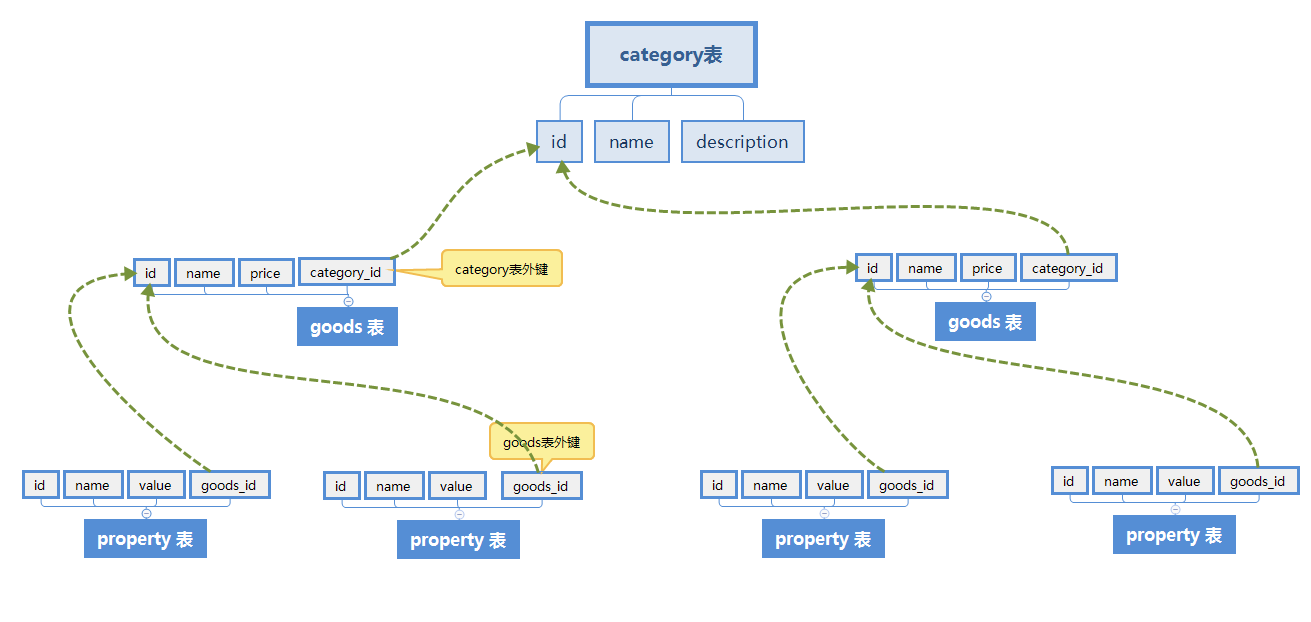TP5 關聯模型使用(巢狀關聯、動態排序以及隱藏欄位)
阿新 • • 發佈:2018-12-22
在資料庫設計中,常常會有如下這種關聯模型,分類表中一條分類對應多個商品表中的商品

如果要獲得分類表中每條分類 以及 對應的商品的資訊,則需要先查詢分類表中的資料,然後根據結果遍歷查詢商品表,最後把資料拼接在一起
TP5中關聯模型可以解決這一問題
普通關聯
先建立分類表模型 Category.php 以及商品表模型 Goods.php
在分類表中建立關聯
class Category extends Base { public function goods(){ return $this->hasMany('Goods','category_id','id'); } }
控制器中呼叫
public function list(){ return CategoryModel::with('goods')->where(true)->select(); }
巢狀關聯

模型Category.php
class Category extends Model { public function product(){ return $this->hasMany('product','category_id','id'); } }
模型Goods.php
class Product extends Model { public function property(){ return $this->hasMany('property','goods_id','id'); } }
在控制器中呼叫:
public function index() { return Category::with('product,product.property')->where('id',1)->find(); }
在呼叫關聯模型查詢資料時,如果我們需要動態隱藏欄位,或者給記錄排序時可以這麼做
class Category extends Model { public function product(){ return $this->hasMany('product','category_id','id'); } public function list(){ //在with中可以傳遞一個閉包函式,函式的引數為當前key鎖對應模型的查詢器 $this //在閉包函式中無需使用select或者find等返回資料 //如下操作返回 category中所有值,以及對應 product ,並且product按照price排序 return self::with([ 'product'=>function($query){ $query->with('property')->field('name')->order('price'); } ])->select(); } }
建立原則
1. 哪張表中建立外來鍵那麼那張表就是從表
2. 理論上可以在關聯的兩張表中建立關聯關係,例如使用者表User 和使用者資訊表 Profile 是一對一的關係,假設在Profile表中user_id欄位指向User表的id欄位,那麼在User表中可以建立外來鍵
public function profile(){ return $this->hasOne('profile','user_id','id'); }
也可以在Profile表中建立
public function user(){ return $this->belongsTo('user','user_id','id'); }
